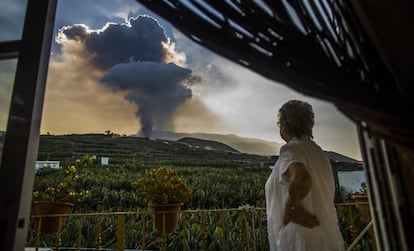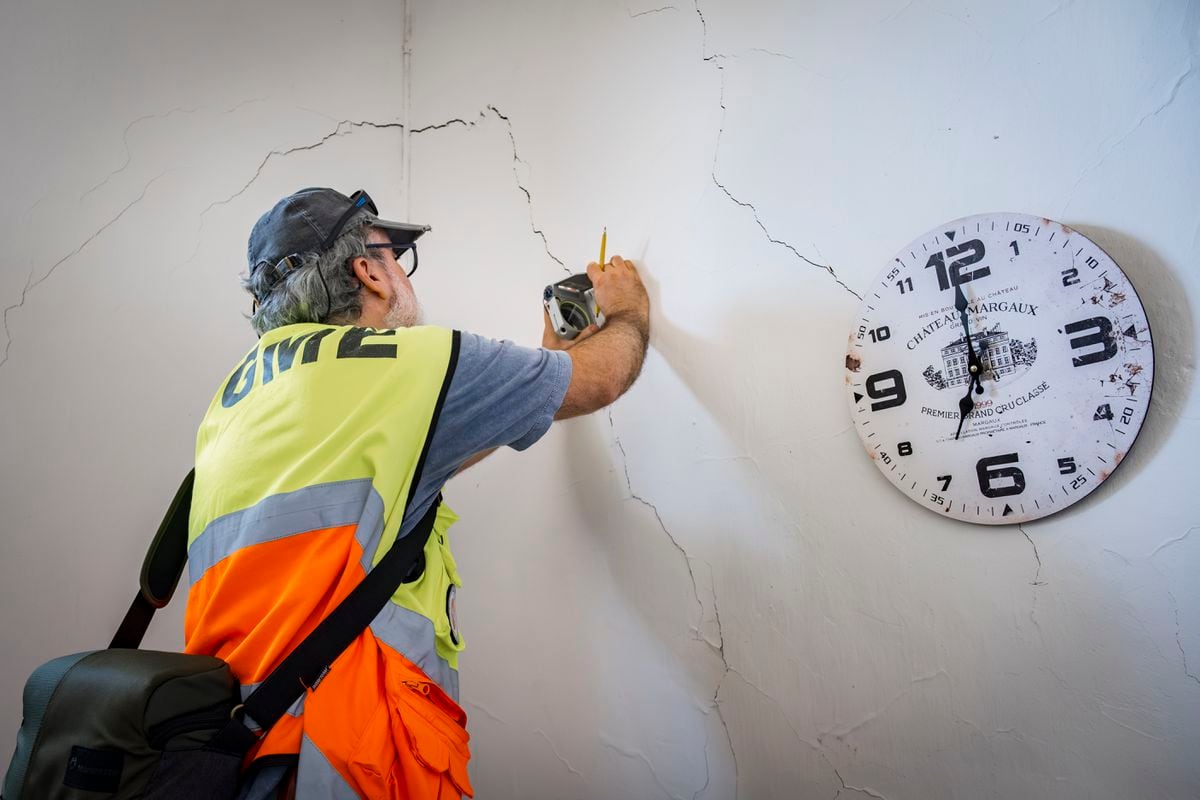The lava from the Cumbre Vieja volcano is modifying the appearance of the island of La Palma and this has important social and environmental implications, but it also opens up some unusual legal questions. What happens to the ownership of the land through which the magma advances? According to the experts consulted, this natural catastrophe that is happening in slow motion can trigger significant changes in different areas. On the one hand, if the lava finally reaches the sea, the volcanic rock could expand the surface of the Canary Island, which requires resolving the ownership of the new land. In some cases, according to the Geological and Mining Institute of Spain (IGM), these outcrops in other places have come to modify the maritime limits of countries. Secondly,on La Palma the lava flow is already covering land that has some owners, but whose uses have completely changed. The administrations involved will have to decide what to do with these areas when the magmatic material solidifies.
In the first case, we still have to wait to see if the lava finally reaches the sea and in what way. If new lands were created on what is now the sea, as indicated by sources from the Ministry for the Ecological Transition, Spanish legislation establishes that the first coastline is in the public maritime land domain (DPMT). This is reflected in the 1978 Constitution and the Coastal Law, so that this hypothetical extension of the island of La Palma would belong to the State. On the other hand, this can mean that certain areas along the coast that are within the DPMT suddenly cease to be, and a process of disaffection can be opened to unprotect them.
In Tenerife, the eruption of the Trevejo volcano in 1706 buried a large part of the town of Garachico and left a completely different coastline profile, where the volcanic rock has created curious pools of seawater that have now become natural pools, a tourist attraction that manages the City Council.
More information
The last harvest from the lands condemned by the La Palma volcano
Live video |
La Palma volcano eruption at Cumbre Vieja
One of the lava tongues of the La Palma volcano stops and the other advances at only four meters per hour towards the sea
If the gain of space from the sea on La Palma is for the moment only a hypothesis, it is even more so that the lava could significantly alter the profile of the coast. However, in some eruptions in other places, the action of volcanoes has also come to modify the lines that mark the rights of use of the countries in the sea. As Luis Somoza, deputy director of the IGME, points out, the exclusive economic zone (EEZ) that defines the rights over the exploitation and use of marine resources is determined by taking a distance of 200 nautical miles (370.4 km) inland from the sea. from the coast of nations. Therefore, if suddenly a new ledge appears on the coast or a new islet emerges, then the limits are expanded. "This is considered a natural growth, it is just a simple hypothesis,but it has happened before in Japan and in China ”, Somoza points out, specifying that the United Nations Convention on the Law of the Sea does not accept this when the expansion over the sea has been carried out artificially.
In any case, what is very real is the lava wall that has already engulfed more than 350 properties and farms of all kinds on the island of La Palma. According to data from the European Earth Observation System Copernicus, on Wednesday the lava from the Cumbre Vieja volcano already covered 166 hectares of the island. What will happen to these lands completely altered by magma? Here the answer is much less clear, as it will depend on what the competent administrations do. However, what was once perhaps a house with a swimming pool or agricultural land has now become a heap of volcanic rock difficult to use as before, but with enormous geological and environmental value. Some researchers consider that, regardless of ownership, these lands should be protected. Nevertheless,the implications of this depend on the type of protection chosen.
According to José Miguel Tabarés, vice-dean of the College of Registrars of Spain, “if nothing were done, the private lands under the lava would continue to be so, but it seems reasonable that some regulatory or expropriation process should be carried out to transform them into public ones, as that these owners now have are land where they cannot build or cultivate ”.
A woman contemplates the column of smoke released by the La Palma volcano, this Thursday.Samuel Sánchez
Urban planning, much more rigorous
On the other hand, Rafel Audivert, an administrative lawyer specializing in the environment and professor of administrative law, wonders how urbanization was allowed in the affected area, where other eruptions had occurred, even many years ago. He is convinced that from now on the legislation and urban planning are going to be much more rigorous, not only in relation to the possible evolution of a volcano, but also to other natural phenomena and their eventual consequences, such as the rainfall regime. in relation to river courses, for example.
What cannot be expected is that there will be complaints to the public administration due to unforeseen circumstances, since the predictions about the possible eruption of the volcano allowed taking measures and having the population warned of the danger. The debate, in any case, will be raised with respect to risk prevention. In the understanding that the degree of demand has already increased a lot in recent years, and what was previously fortuitous today is considered negligent.
“Urban planning,” says Audivert in this sense, “is going to be stricter in many places. In the area now affected on La Palma, one of the first measures will have to be the establishment of protection strips, affecting homes and properties ”. Here the answer must therefore go through a combination of actions that will have to do both with politics and with the law. According to Audivert, there will be properties that will simply disappear, and their owners will be compensated. Obviously, those with insured assets will have greater protection and compensation. The Insurance Compensation Fund will have to act in the event of damages caused by a catastrophe.
But the public powers will also have to come to the aid of the less far-sighted or the most helpless. For example, those who carry out cultivation activities will not be able to continue in many cases on the same plots. In this case, there is the possibility of acquiring new land in predetermined areas, that is, receiving land, in the same way that those who have seen their house burned and demolished may settle in new homes offered by the institutions. None of this can be done in two days, because it will involve a process of accreditation and verification of ownership, for example.
Luis Cordón, civil law lawyer at the Tornos de Barcelona law firm, explains that whoever does not have an insurance subscription “will feel, from the outset, helpless”.
He estimates that in the short term there will have to be a response in the form of administrative actions from the Canary Islands Government, because the properties affected will not only be those that have been destroyed.
As detailed, "in that area there will be many buildings, chalets and houses that have not been destroyed by the lava, but that will be isolated.
They will have been left standing, but without supplies of any kind, nor water, nor sewerage, and perhaps without access ”.
The balance of damages, in short, will include elements of those that appear at first sight.








